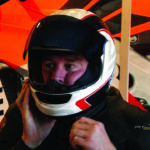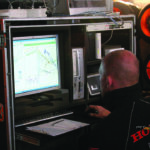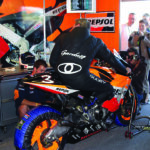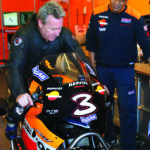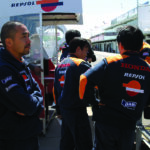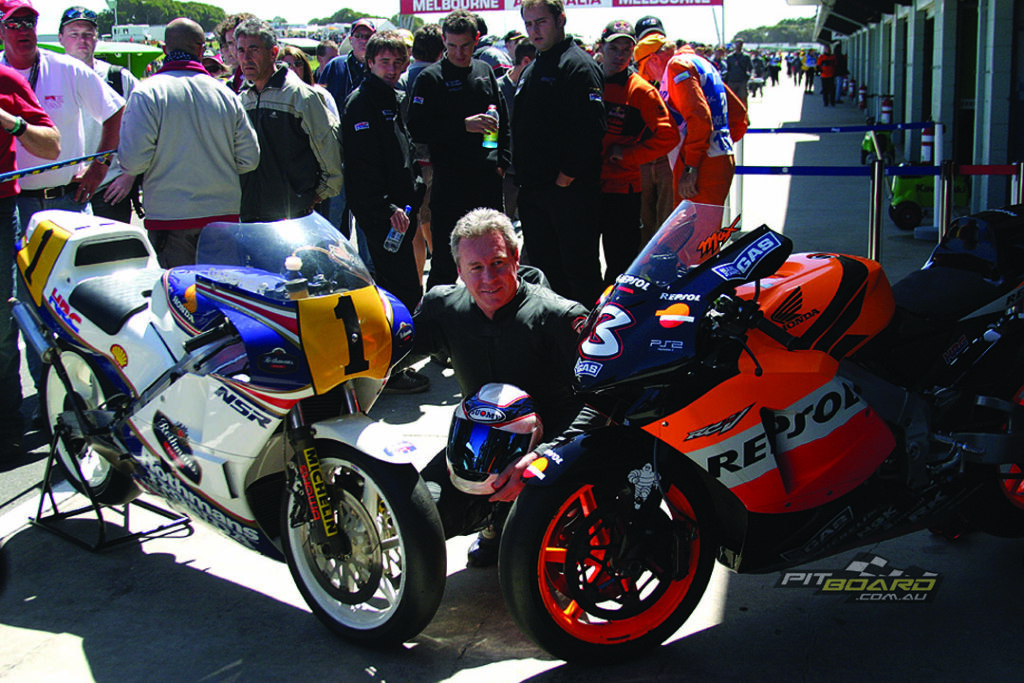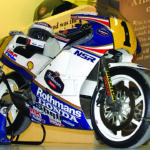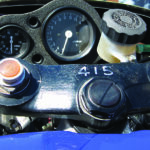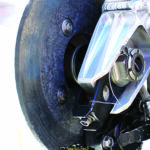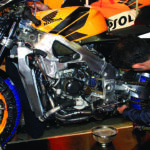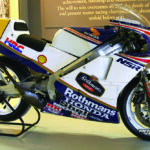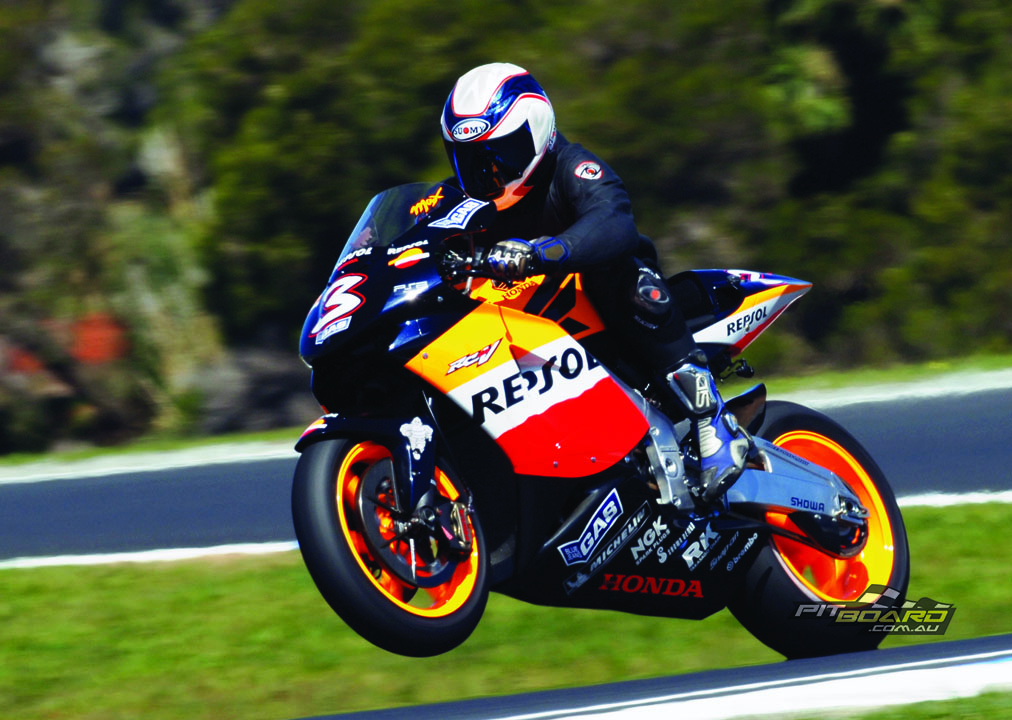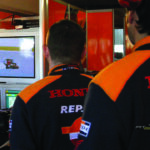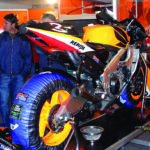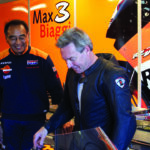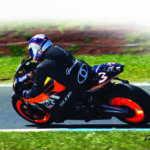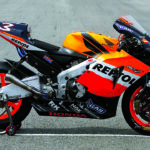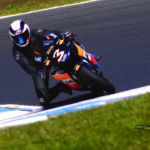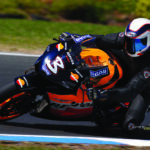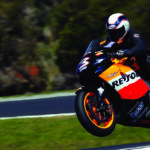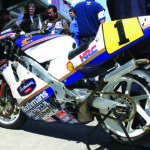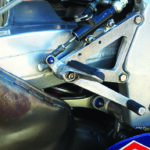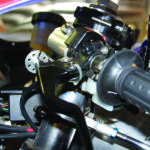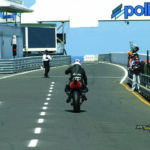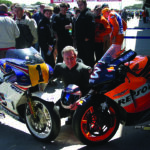Back in 2005, Jeff Ware and Peter Pap arranged, with the help of Phillip Island and MotoGP, for Wayne Gardner to ride Max Biaggi’s Repsol Honda RC211V, check out what he though compared to his old NSR500. And by the way, he was only three seconds off Max’s times… Photos: Keith Muir, Peter Pap & Trevor Hedge
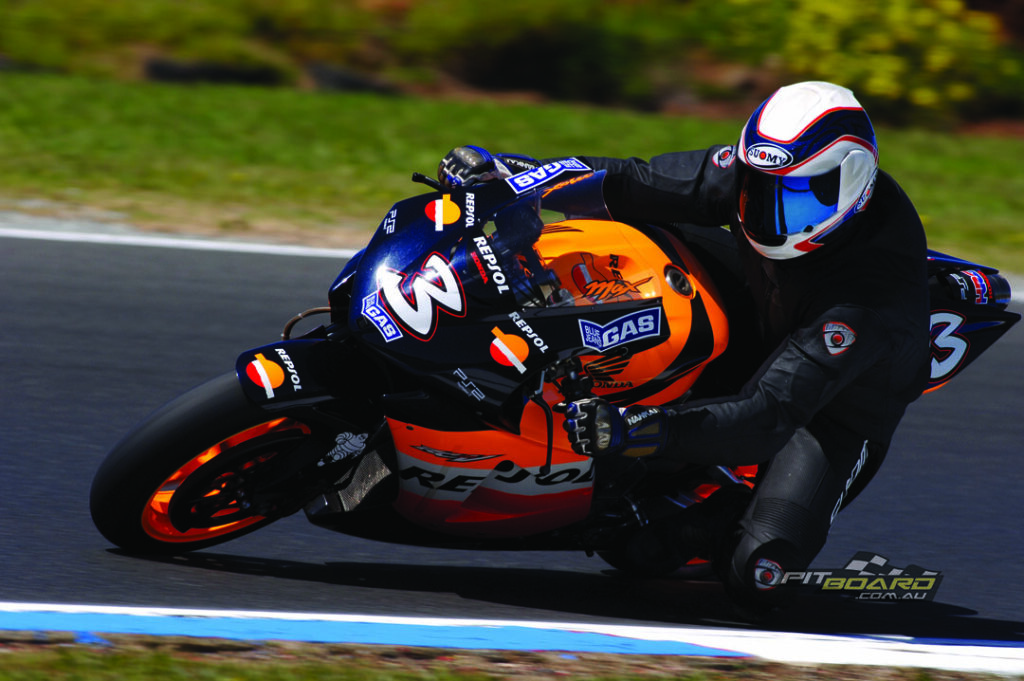
“The acceleration is what really shocked me. Compared to the NSR, the RCV is amazing. It’s just phenomenal.” Those are the words of 1987 world 500 grand prix champion, Wayne Gardner – who was still sweating after a sliding, wheelstanding, wheelspinning ride on Max Biaggi’s Repsol Honda RC211V. It had been 13 years since the 18-time GP winner had ridden a grand prix bike, his last world championship race being the South African Grand Prix, 1992, aboard an NSR500.
Read Mossy’s test of Rossi’s RC211V here…
Fittingly, and by pure chance, his return to the Honda garage was under the watchful eye of Erv Kanemoto – who was also there for Gardner’s last GP. “Walking into the pit garage and seeing Erv was great,” said Wayne, “It wasn’t planned that way and it was very fitting that my return to riding a grand prix motorcycle was with Erv. “As soon as I walked into the pits those 13 years seemed to disappear. I felt like I hadn’t left, although I am older and fatter now! But the feeling was still there. It was very emotional for me.”
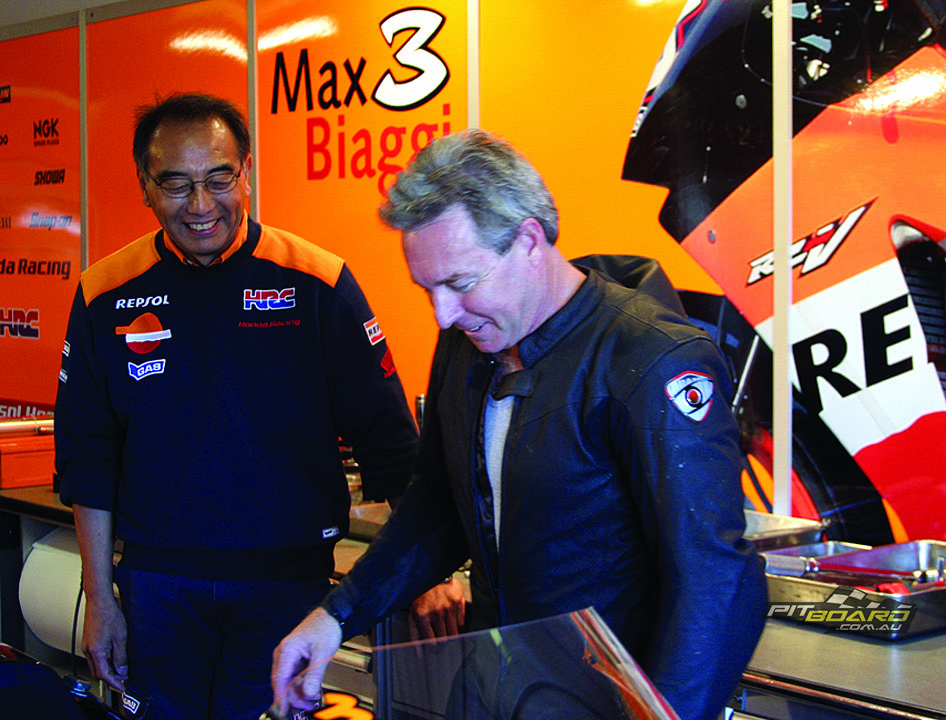
It was the Australian Grand Prix – an event that was built from the foundations laid by Gardner back in the late ‘80s – and a fitting place for WG to give his fans a buzz. It was also an opportunity for Phillip Island to say ‘Thank you’ to the man that put Aussie motorcycling on the map. As Gardner caught up with old mates in the Honda camp, his 1987 NSR500 was wheeled out into pit lane and placed alongside the #3 RCV of Biaggi.
Check out our other racer tests here…
The crowd began to stir as images of the old Rothmans Honda were shown on the screens around track. You can bet that most of the crowd are hardened GP goers. Punters that were there for Gardner’s gutsy wins in 1989 and 1990. The NSR’s livery was bringing back memories. The crowd was starting to rumble…
“The build-up to the ride was amazing. It was an experience I’ll never forget. As I was gearing up in the change room I just couldn’t believe it’d been 13 years. The routine was the same. Leathers on. Then boots. Stretching. Walking into the garage and getting the rundown from Erv. Earplugs in as the bike is being warmed up. Brap. Brap. Brap… “Checking the monitor, cleaning my visor. Checking my helmet strap and then, finally, getting the nod from Erv. You’re up!”
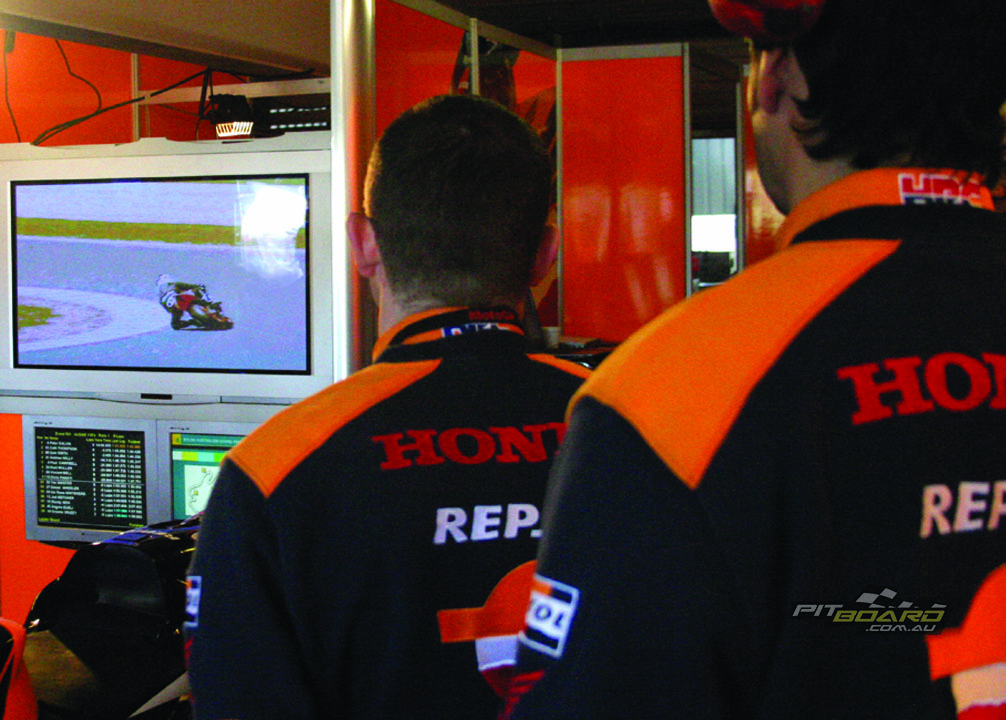
“The first thing I noticed about the RC211V is the size,” admits Wayne, “Although it looks very tight and compact, Biaggi’s bike is actually quite roomy. The reach to the ‘bars is further than the old NSR and the seat-to-footpeg distance is also roomy. There’s plenty of space to move around on the bike.”

With 250-odd horsepower on tap and, err, a fair gap between rides, it was no surprise that the Repsol Honda garage began to stir and break into a group cold sweat as Gardner rolled out into pit lane and began his trip to the pit lane exit. All eyes turned to the monitor and Erv Kanemoto was at the front, joined by team manager Tanaka-San. Silence was followed by bursts of nervous laughter as Wayne wheelstood out of pit lane and onto the track…

“As soon as I clicked first and started to ride away I thought, ‘I remember how to do this. I know how to ride a GP bike,’ so I pulled a wheelie straight away!” The plan was for WG to do a sighting lap and two flying laps, so there was no rush to set the world on fire in the first corner. Still, once a racer…
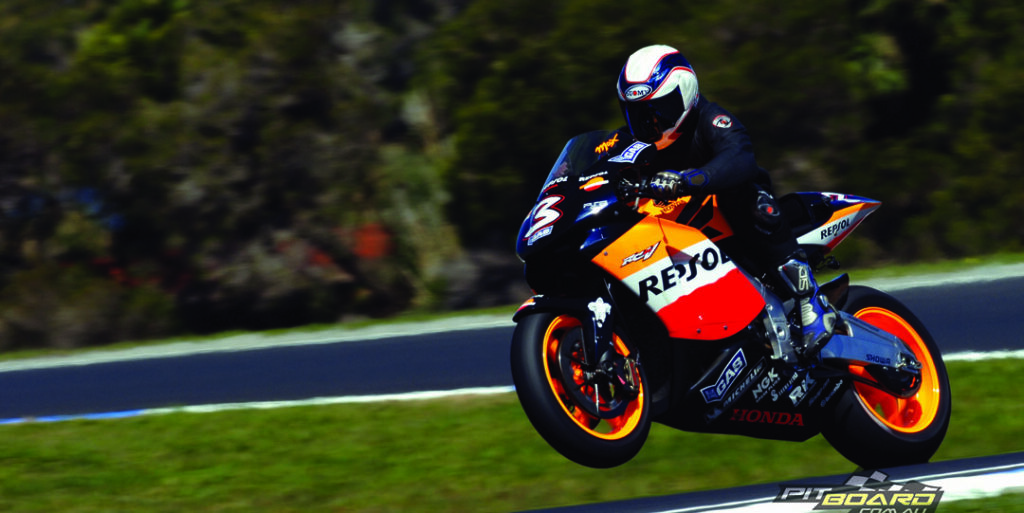
“I was supposed to wave at the crowd, just do some demo laps. I took it easy for the first few corners, then I made a decision – bugger waving at the crowd, I’m going to have some fun on this thing!” With a lifetime of experience on wild NSR500s it is no surprise that Gardner found the RCV to be smooth and rideable, comparing it to one of his favourite bikes, the Suzuka 8-hour RVFs that he enjoyed so much success on.
“The RC211V is very rideable. The power curve is really, really good – just like a roadbike but much more powerful. Initially I made the mistake of riding the bike a bit too much like a two-stroke, keeping it in the high rpm. The result was lots of wheelstands and wheelspinning, but I soon figured out where to short-shift and how to ride the torque. The V5 is amazing. It pulls from quite low in the rev range and it’s nice through the bottom-end and mid-range. From 9000rpm the bike really starts to accelerate hard and to 17000rpm it is just amazing.
“The V5 is amazing. It pulls from quite low in the rev range… From 9000rpm the bike really starts to accelerate hard and to 17000rpm it is just amazing.”
“The gearbox is terrific. Biaggi has his shifter set very sensitively and you only have to touch it to change gears. The ratios are wider than the old two-strokes and I think this is a motorcycle that could benefit from overgearing – because of the torque curve. It’s very useable. “I liked the clutch set-up, with the back-torque limiter. I tried it out into Honda hairpin and the rear tyre just skipped a little. It is set just right.” Wrestling the NSRs of 1985 to 1988 was hard work (they improved in 1989), and Gardner developed a very aggressive point and shoot riding style, steering with the rear wheel out of necessity.
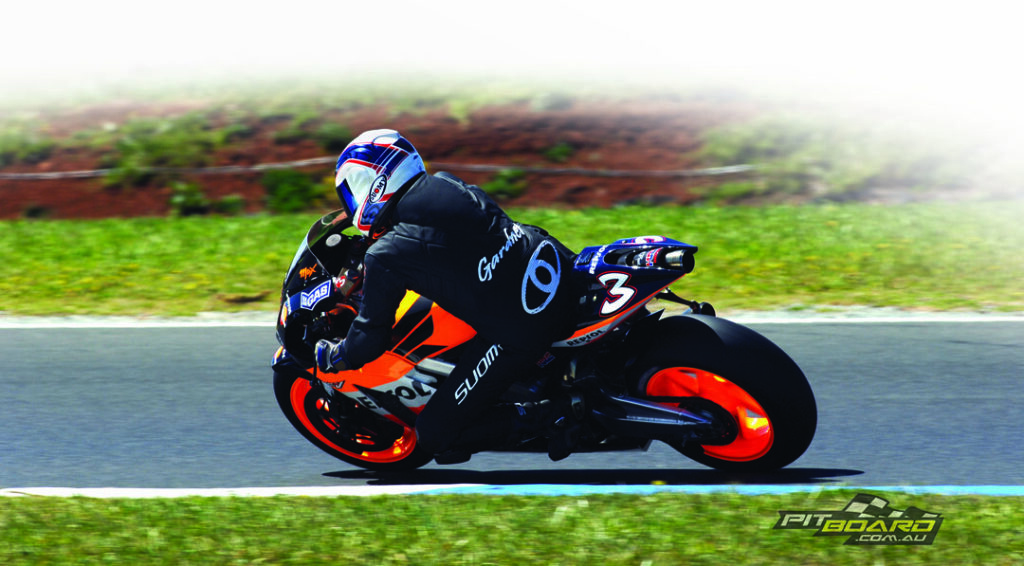
The modern grand prix motorcycle is, however, much more refined in the chassis department. “I can’t believe how well the RCV handles,” admits WG, “Turn-in is very light, very easy, accurate and predictable. The motorcycle is extremely stable, even through the fast sections, and the brakes are fantastic. They are so, so hard hitting once they’re up to temperature. Really amazing. There’s good feel and feedback from the chassis, it’s very neutral and reasonably light – but it does feel heavier than the 500.”
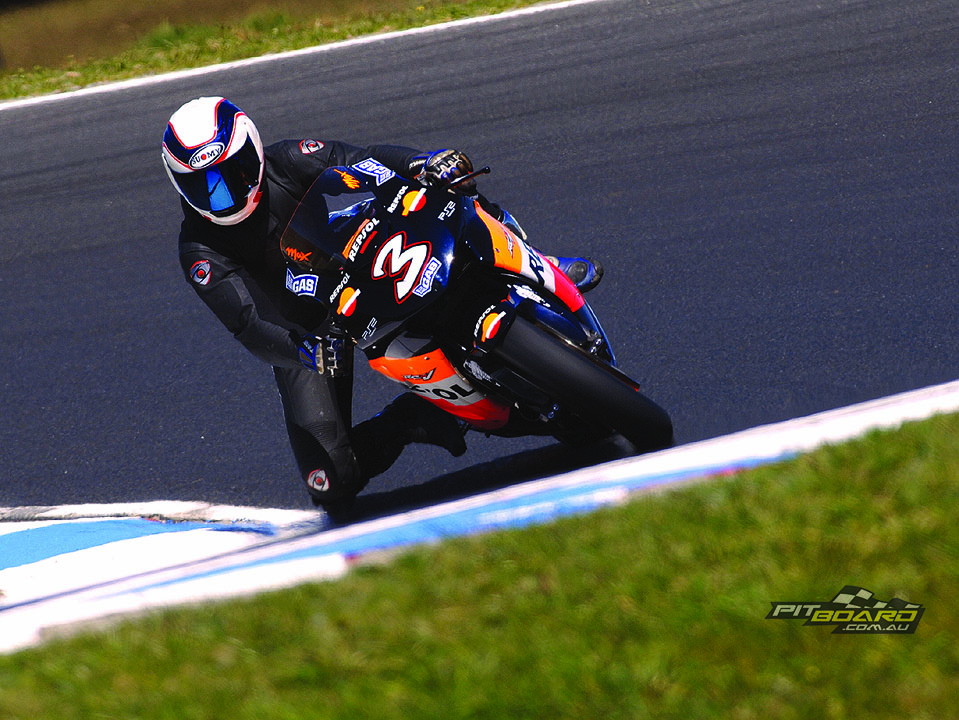
“Max likes to ride with lots of corner speed, so he runs the front very stiff and the rear quite soft. That didn’t really work too well for me as I’m more aggressive on the throttle off the turns, so a few times on my last lap the rear squatted and the bike ran wide off the turn – but that’s only a setting issue.”
NSR500 vs RC211V
“Wow. I really don’t know where to start with the differences – the NSR just seems so old, a bit like it’s rider!” Gardner spent some time sitting on his 1987 NSR after the RC211V ride – and he couldn’t believe the difference. “I didn’t realize that the NSR had aged so much but I guess it is almost 20-years old now. It’s just so small, it feels like a mini bike!”
With a weight limit of only 115 kilograms compared to the RCV’s 148 kilograms and no bulky electrics it’s no wonder the NSR500 feels so small. It is. The seat height is much lower than the RCV, the NSR is narrower and the bike is generally pretty bare bones by today’s standards.
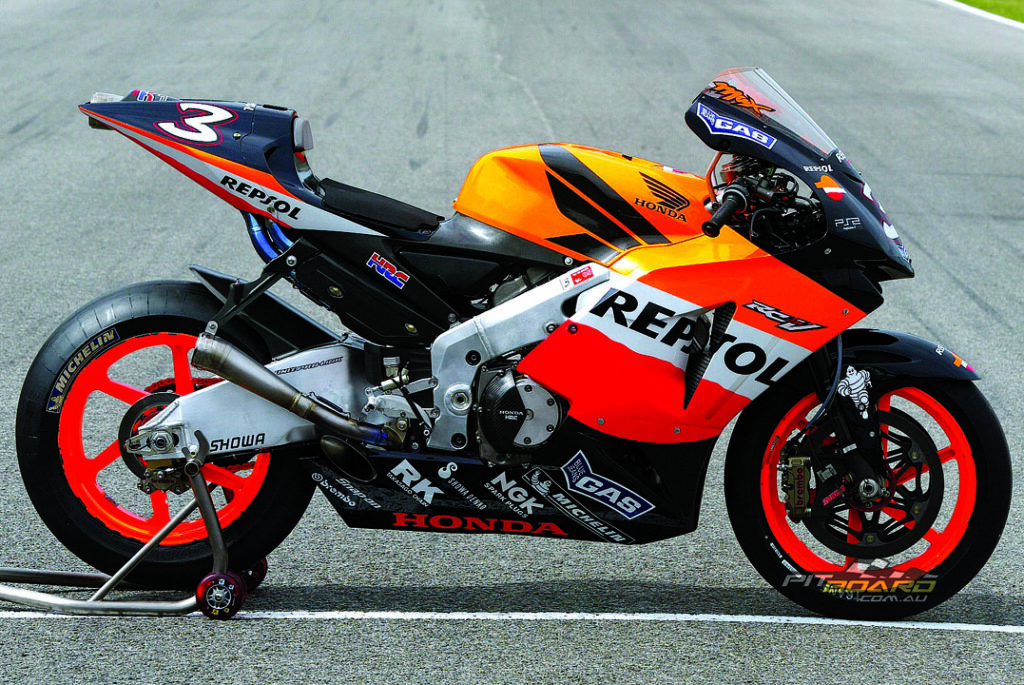
“Still, millions of dollars were spent developing the 1987 NSR500 and it was a very, very fast motorcycle – plus it won the world championship. But I wouldn’t say it was a good motorcycle at that stage in its development. The ’86, ’87 and ’88 NSR500s were very, very difficult to ride.” Although the brutish NSR got a new chassis for 1987, a new V angle of 112-degrees and a conventional crankshaft rotation (clockwise), the V4 500 was still a handful, and didn’t like to go around corners. “The only way to turn the NSR was with the rear wheel – and you have to work hard to do that for 30-laps on a 190-horsepower bike with a 4000rpm powerband.
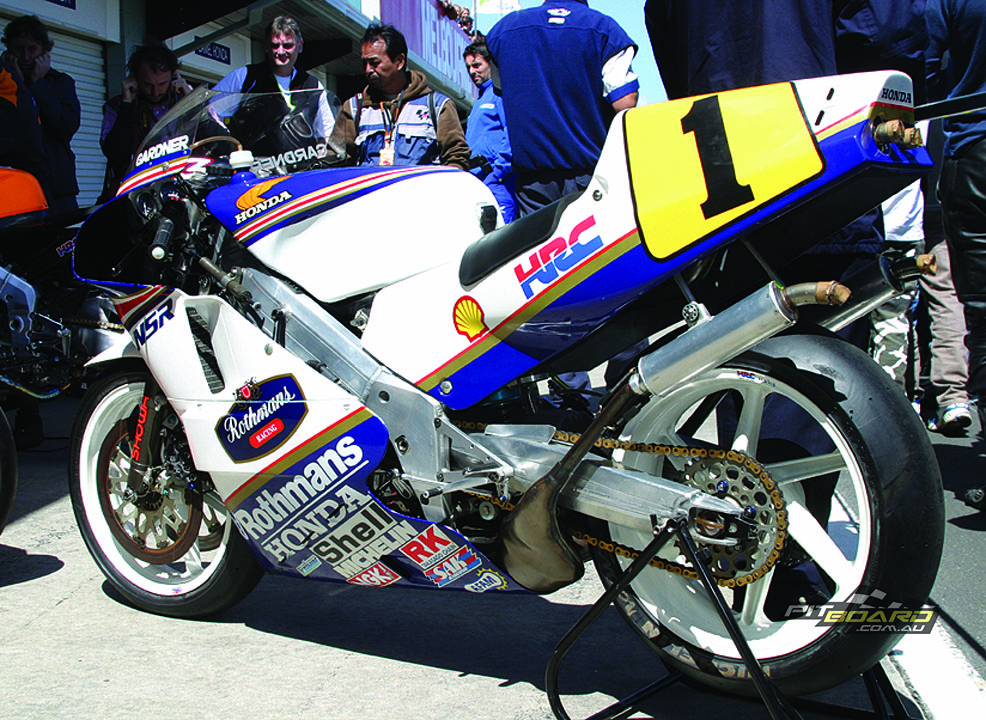
“500s are very physical to ride over race distance, and mentally draining. Keeping them on the pace is tough and they are easy to over ride and crash on. The RC211V felt much easier to ride and I think that, over race distance, the four-stroke would be easier than the two-stroke. In saying that, these guys are doing an amazing job riding at the level that they are. Rossi seems to be the only rider taking a four-stroke beyond its limit day-in-day-out but the others are still very fast.”
“The RCV felt much easier to ride and I think that, over race distance, the four-stroke would be easier than the two-stroke.”
“Technology has come a long way since the NSR days, and it shows when you look at the fundamental components of each of these factory bikes. The NSR wears cast-iron rotors with conventionally mounted four-piston calipers. The RC211V has carbon rotors with radial-mount calipers. The NSR has conventional forks – the RC has huge inverted items. The list goes on.”
“The 500 was very mechanical – no quickshifter, no rider aids such as traction control, back-torque limiting, or even telemetry! It was still very much seat of the pants riding, right down to jetting the four 36mm Keihin carburettors and picking gearbox ratio’s – which was absolutely crucial on the 500. “Riding the RC211V was a hell of an experience. But I have to say, nothing beats the excitement of a 500cc Grand Prix two-stroke!”
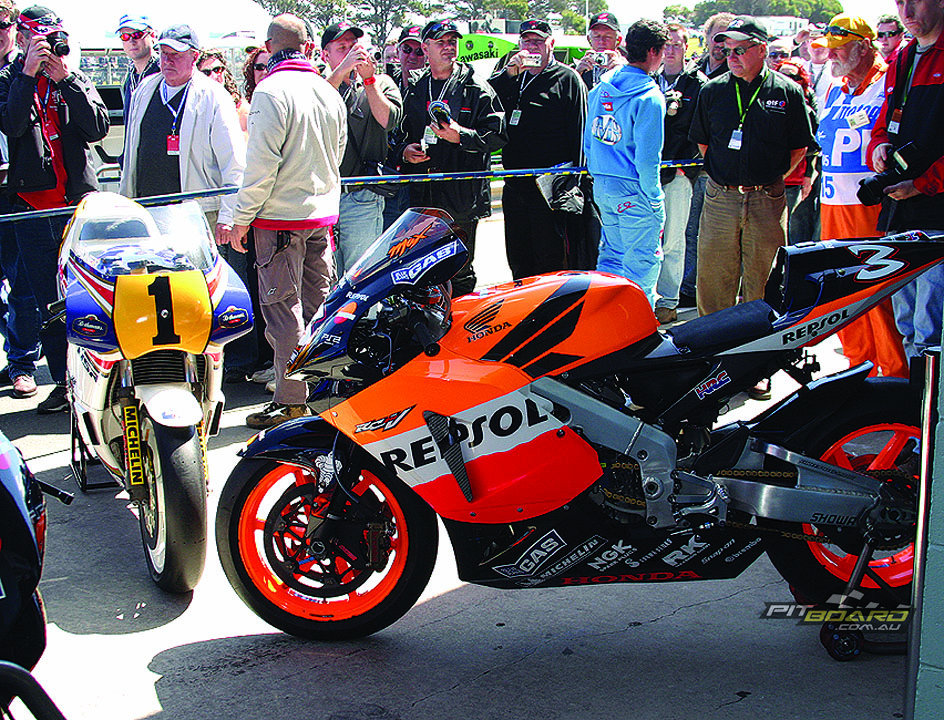
The RC211V engine is a direct descendant of a V6 Honda engine called the FXX, which was designed in the late ’80s to optimise mass centralisation and compactness. The engine was successful, but never put into production – despite out-performing the RC30’s V4. RC211V project leader, Tomoo Shiozaki, was part of the team that developed the FXX, and the influence of that engine shows in the RCV’s V5. The V5 was chosen to avoid the 10kg penalty a six-cylinder would incur – plus Honda though it would be a good challenge…
Biaggi’s Honda RC211V MotoGP Racer Specifications
ENGINE: Liquid- cooled, DOHC, 20-valve, 990cc, 75.5-degree V5 four-stroke, 72.3mm × 48.2mm bore x stroke, Multi-injector programmable EFI, digital ignition, Six-speed cassette-type gearbox
CHASSIS: Twin-tube frame, Telescopic forks at the front, unit pro-link rear suspension, twin radial-mounted four piston calipers with carbon discs at the front, Michelin tyres all round, 17in at the front, 16.5in at the rear, 2050mm length, 600mm width, 1130mm height, 1440mm wheelbase, 130mm ground clearance..
PERFORMANCE: 240hp (increased to 256hp in 2004), 148kg wet weight, over 330km/h top speed.
OWNER: Honda Racing Corporation, Japan



